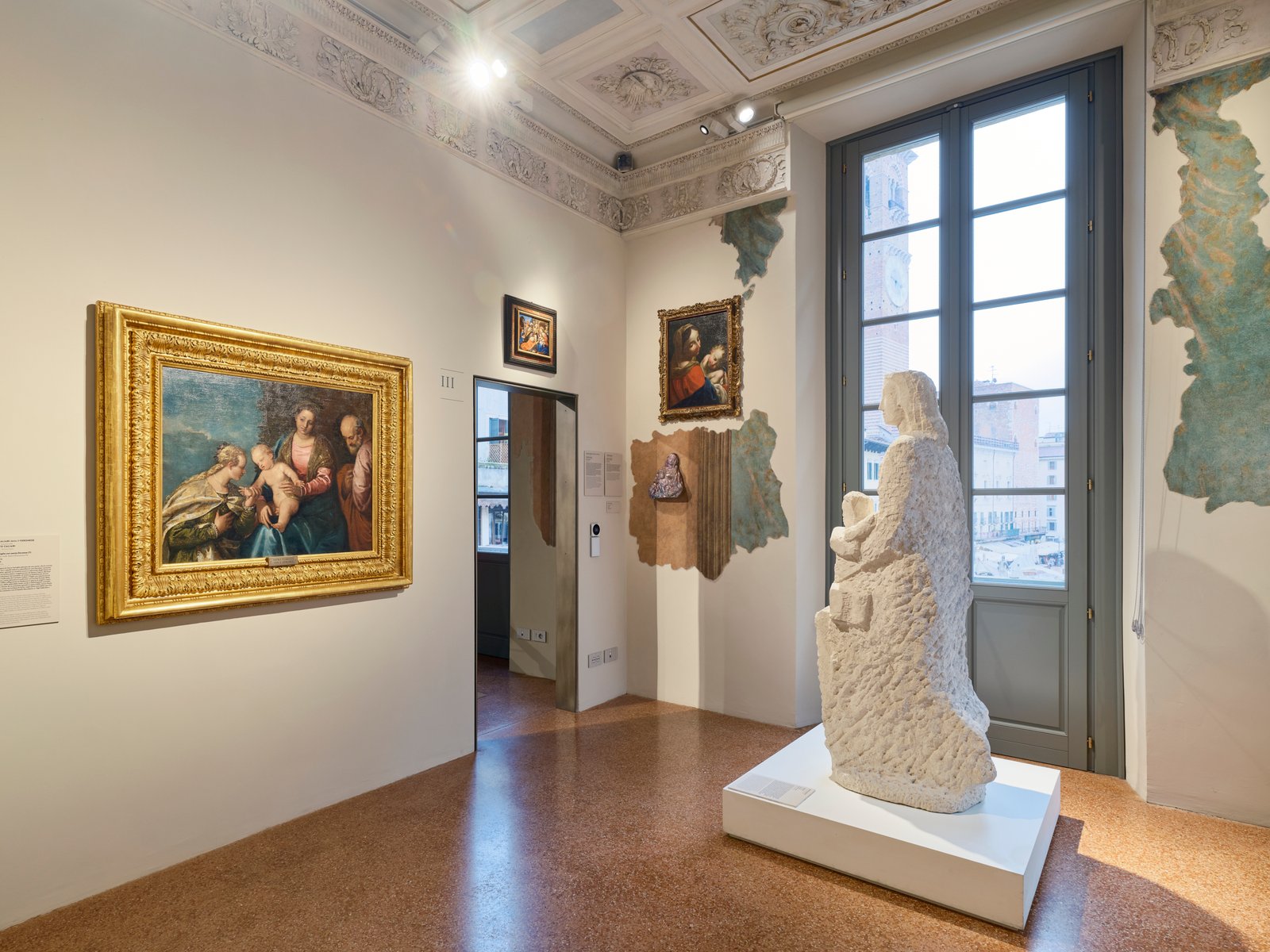The Museum
In Piazza delle Erbe, in Verona, Palazzo Maffei hosts a fascinating Museum, a new reference point for art lovers

An itinerary through the ancient and the modern, with over 700 works that create a dialogue between the arts: painting, sculpture, architecture and applied arts. A selection of great interest that includes works from the Ancient Egypt until today, the result of over sixty years of passionate collecting of the businessman Luigi Carlon.
Throughout the museum, a dialogue has been created between the ambiance of the two Noble Floors, where the atmosphere of a private home and of a cabinet of curiosities can be felt. The dialogue continues throughout the exhibition, where a piece of modern art unexpectedly breaks the thematically arranged classical works.
In the second part of the Collection, a proper gallery of masterpieces from 19th and 20th centuries has been created, where numerous masterpieces stand out and the passion for Futurism and Metaphysical art can be seen through the works of great artists such as Umberto Boccioni, Giacomo Balla, Gino Severini, as well as Pablo Picasso, Giorgio de Chirico, Felice Casorati and Giorgio Morandi next to René Magritte, Max Ernst, Marcel Duchamp. And also Afro, Emilio Vedova, Lucio Fontana, Alberto Burri, Tancredi, Gino De Dominicis, Piero Manzoni.
The result of this great passion is Palazzo Maffei – From Antiquity to Contemporary Art, a cultural initiative fostered by Luigi Carlon, businessman and Veronese collector, architectural project by studio Baldessari and Baldessari and curatorial project by Gabriella Belli, with scientific contributions by Valerio Terraroli and Enrico Maria Guzzo.